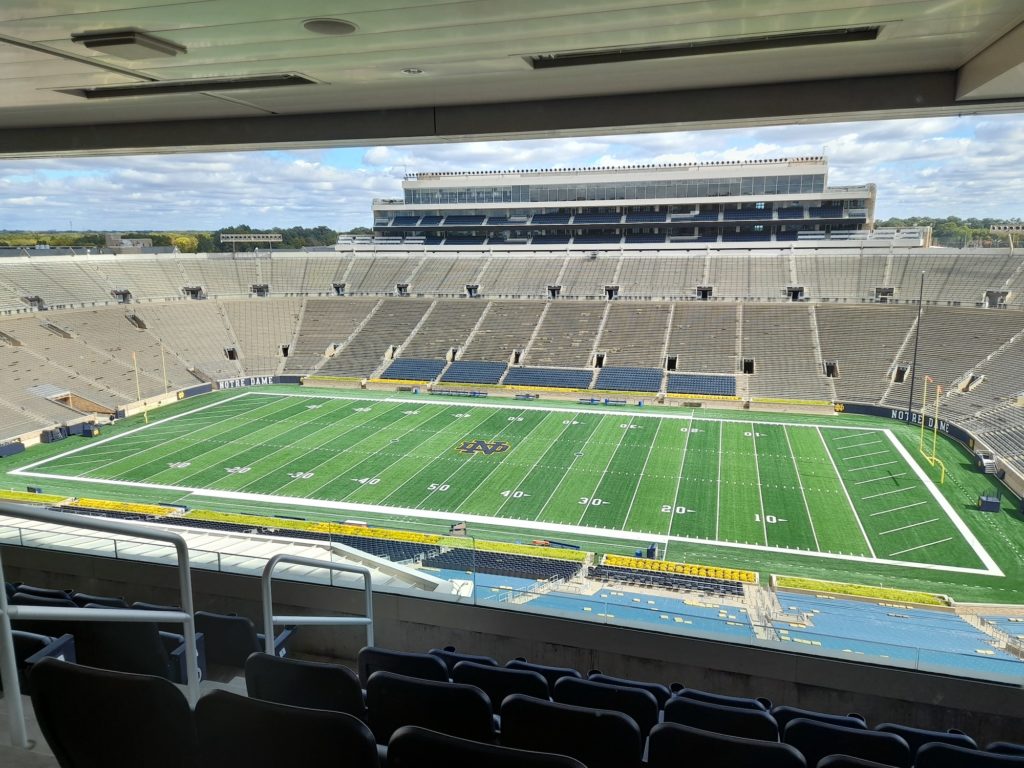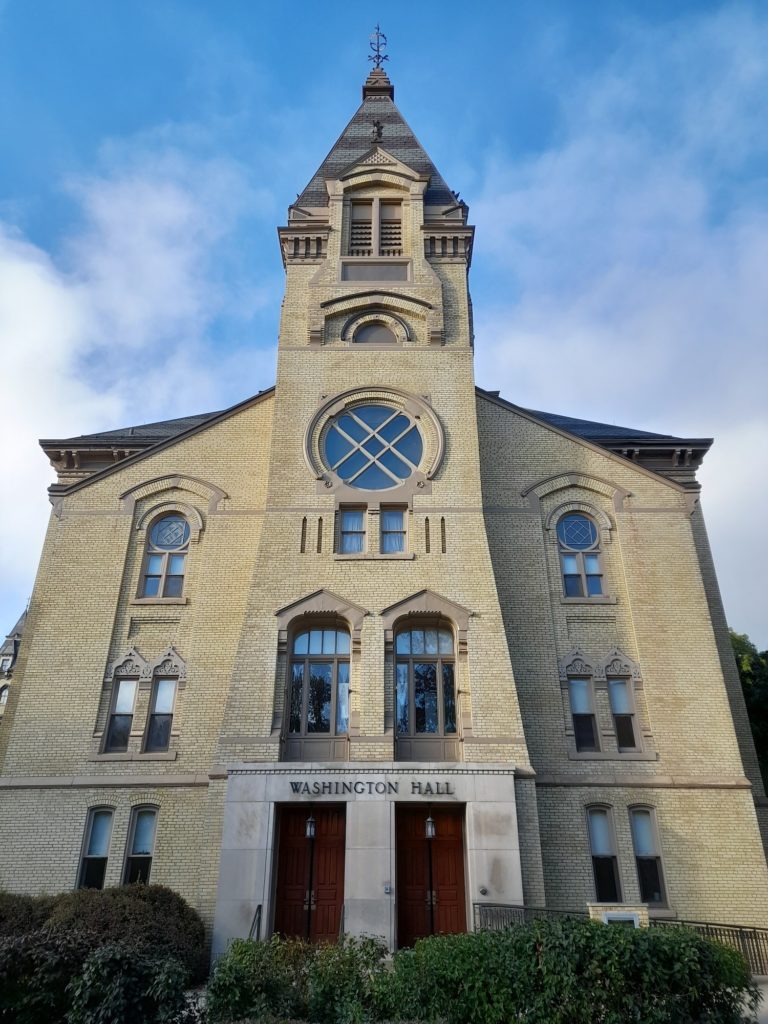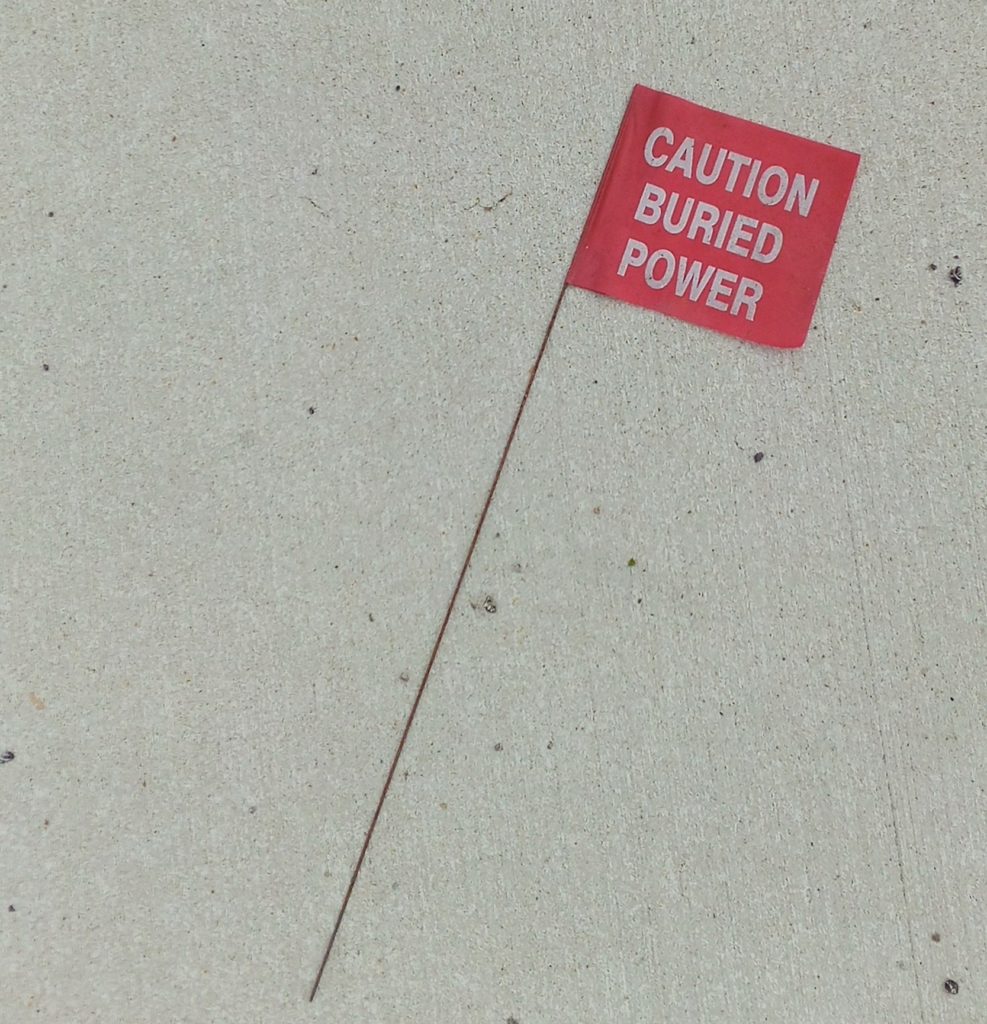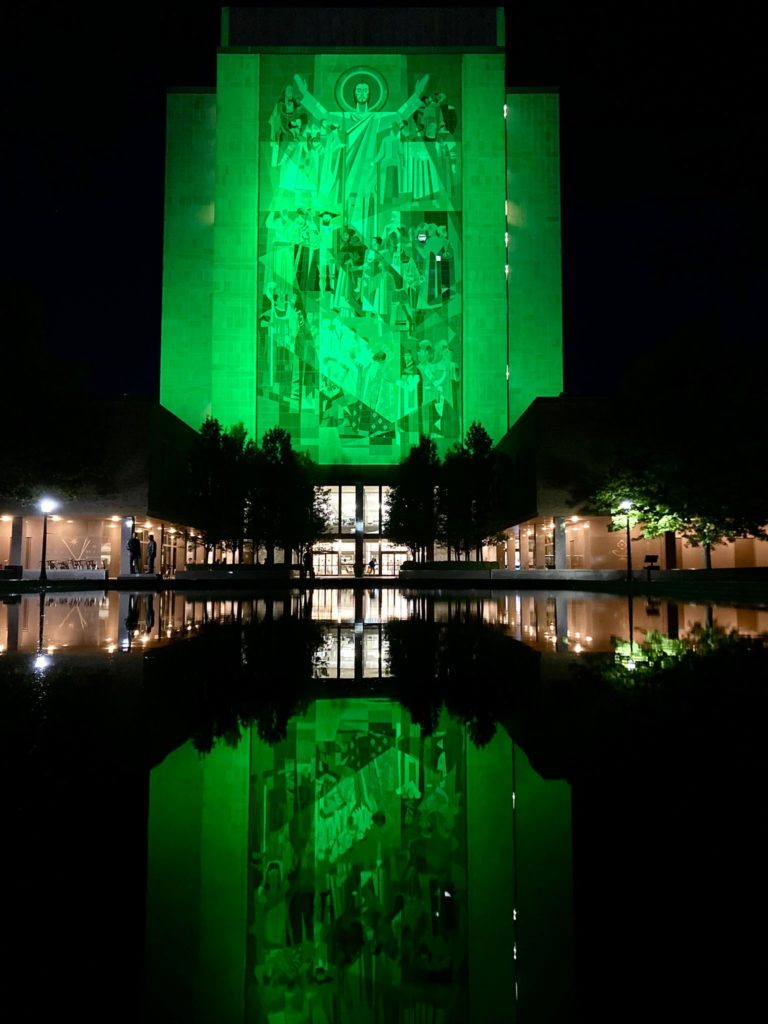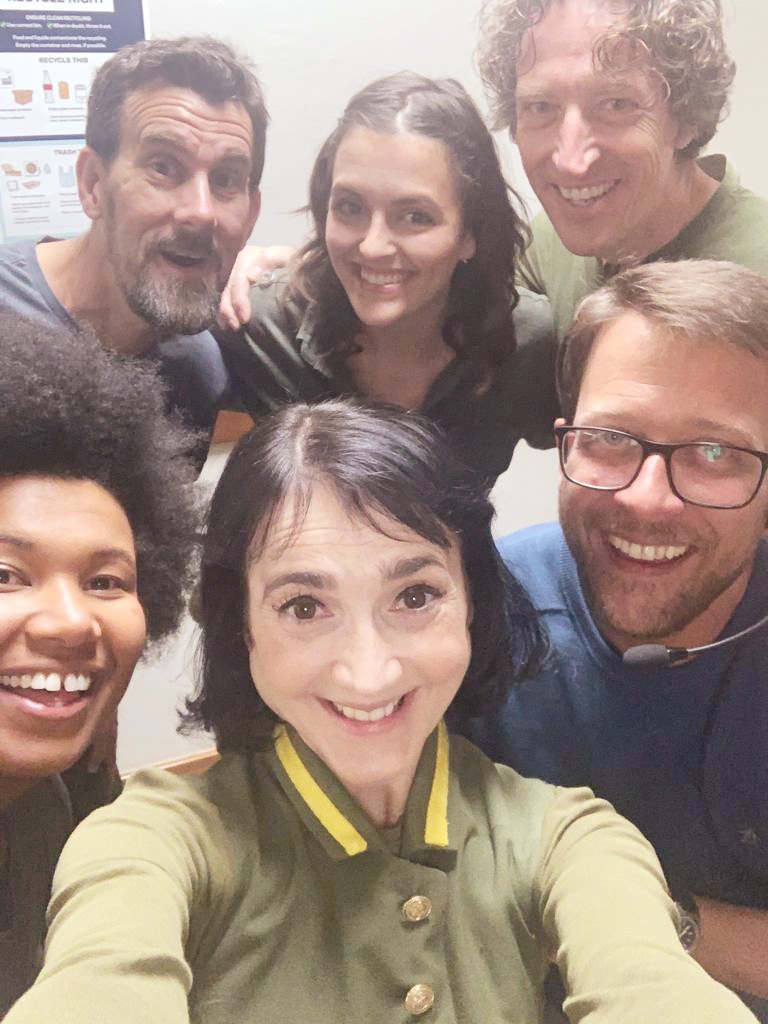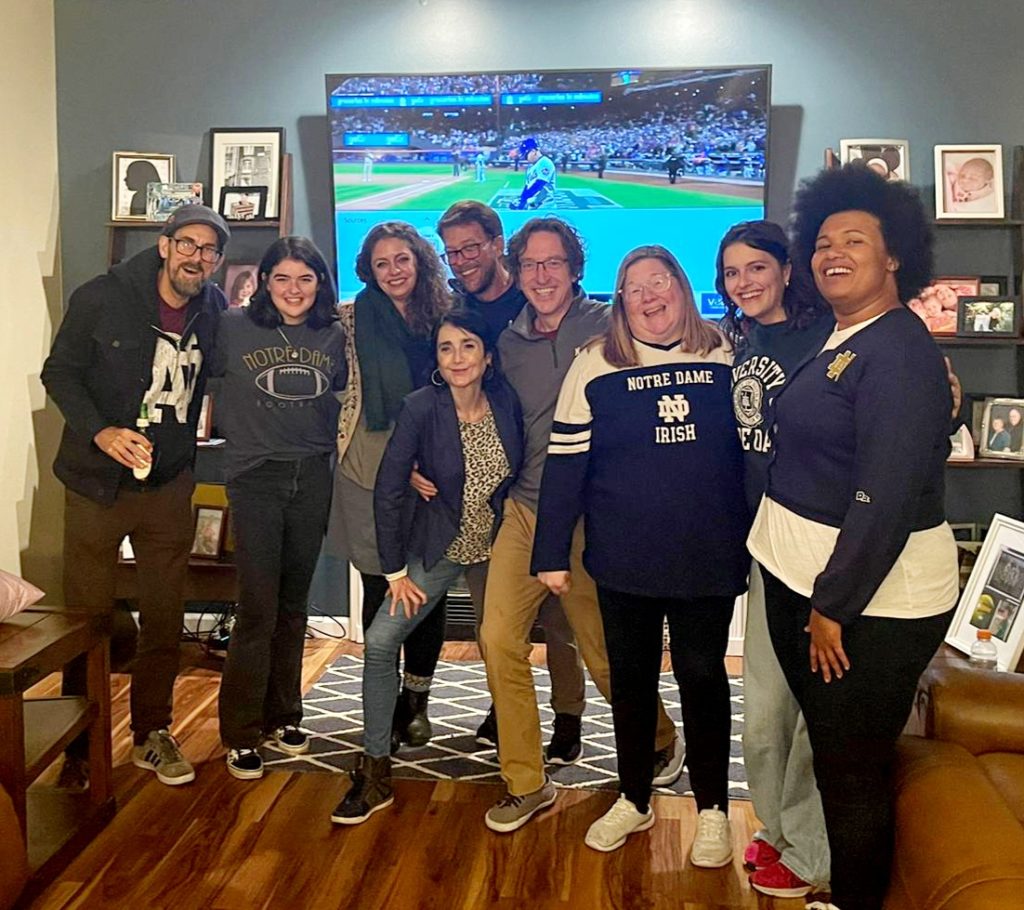By Michael Wagg
This castle hath a pleasant seat
The lights came back on and we made it to South Bend, Indiana. To the University of Notre Dame, which does indeed have a very pleasant seat.
Among its many impressive features, a Golden Dome, a mural known as Touchdown Jesus, a square nicknamed the God Quad, two lakes, two golf courses, numerous theatres, an excellent art gallery, and top notch sports facilities galore, including a football stadium for 77,000 fit to host Athenian Olympics. Its pristine, green and vast campus is part immersive Hogwarts experience, part Irish saga (its many successful sports teams are known as the Fighting Irish) and its catholic basis strong and present: Mass is read 150 times each week and if a crucifix is missing from a classroom there’s a hotline you can call. All in all it’s a pretty special place.
We opened our show on Wednesday night at the 500-seat theatre in Washington Hall which comes complete with a bat in the rafters – at the time of writing sadly yet to make an appearance in this most battish of plays. The little fella might prefer the dark of last week’s power cut, but now the light’s returned, as promised I’ll get back to where I left off and try to give you some context for this weird and wonderful job: starting with the performance style of these AFTLS productions, originally developed by a group of adventurous young actors including Patrick Stewart, and now in their fifth decade.
I was able to keep an eye out for the bat, as one of the features of the productions is that all five of us are on stage throughout, sitting at the back or to the side when not directly involved in the scene. Most of the cast play half a dozen characters or more, each one signified by a single, simple costume piece or accessory, and the changes of these happen in full view of the audience. Nothing is hidden away. Sound is acoustic, from the stage; lighting changes very minimal; clear storytelling the aim of the game. At the start of the show we do an introductory line-up to share with the audience which characters we’ll be playing (and to remind ourselves of the same!) At the heart of it all, front and centre, is the text: Shakespeare’s words.
Our weekly workload is fairly evenly split between the show itself and the workshops we deliver in the classrooms. The previous week we’ll have been given a list of requests for class visits, divvied them up among us (which so far often involves Roger gallantly accepting the class on Richard II!) and met with each professor on Zoom to agree the type of workshop we’ll devise. Requests can vary hugely and often have us racking our brains or those of others (thanks Paul O’Mahony!) We might be asked to explore the architecture of Shakespeare’s theatre, improvisation around Ovid’s Metamorphoses, public speaking or (Roger!) economic leadership and Richard II.
The students we’re working with, while often majoring in English Literature or Drama, could just as easily be Physics majors, Business students or, this week, trainee Priests; and one of the things I’m enjoying most is this colliding of worlds. After a warm-up game this week, which involves simply repeating the words ‘diddly dum’ over and over, I asked one student what he was studying. Neuroscience, he said.
The students may or may not have seen our show, and they may or may not have ever been to the theatre before, and I’m sure in some cases we, and our work, must appear quite strange to them – not like the inhabitants o’ the earth, and yet are on’t. But I hope our visits are at least a refreshing change. We’re not going into the classes as teachers, nor or academics, but as actors, trying to share some of our experience of Shakespeare and theatre-making. At its best, I think, we’re exploring where the stuff of the rehearsal room might intersect with and inform other disciplines. And more often than not our starting point is the text of Macbeth.
I must confess, and in the spirit of collision, I’m desperate for the day one of my student ‘weird sisters’ turns out to be a star of the college football team! I was hoping this might be the case on Friday when Anne and I ran a session of Shakespeare Club in the ornate ballroom of the Duncan Center. The view from the room was direct into the stadium below, where 77,000 Fighting Irish fans cheer on their young heroes in helmets weekly.
Sport is massive here at Notre Dame, in more ways than one, and its football (American) players superstars in the making, if not already. I’m told their helmets are painted with gold leaf. It’s been a treat to have a glimpse at the mind-boggling range and quality of facilities available on campus. Even before our impromptu viewing of the stadium on Friday we’d been treated to the chance to sit on the field itself, at a play reading and forum discussion on the war in Ukraine.
And just this morning, as I walked to the Alumni Stadium to watch the women’s soccer team beat Florida State (4-0) in a lively match with a crowd of around 300, I passed a second football stadium (for practise), a baseball diamond, a lacrosse stadium, an aquatics centre, and an ice rink. Each of these arenas make Selhurst Park look like a Meccano set. (Which it pretty much is, but nevermind). Sport is all here; no wonder Jesus gets a touchdown
So surrounded by it as we are, it was apt to end our week with those that make all this happen – the Shakespeare that is, not the sport – as we gathered round the TV to watch Notre Dame take on BYU in Las Vegas (football, American). I’ll introduce you to the rest of the Shakespeare at ND team another time, but for now thanks to the kind invitation from our general manager, the wonder woman that is Debs Gasper, and her husband, we find ourselves gathered together among friends and family, and the dogs – at home. A reminder that it’s the people we work with here who really make this place special, not the gold leaf and golden domes.
